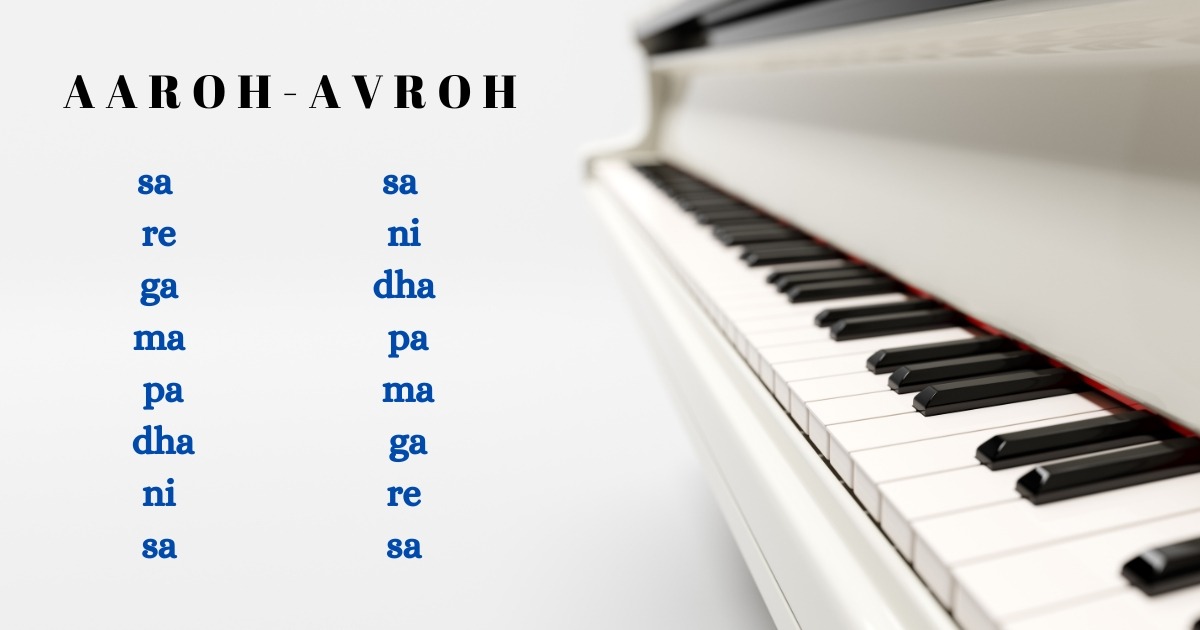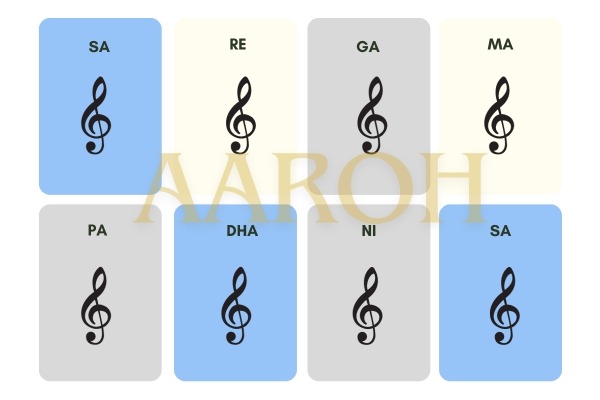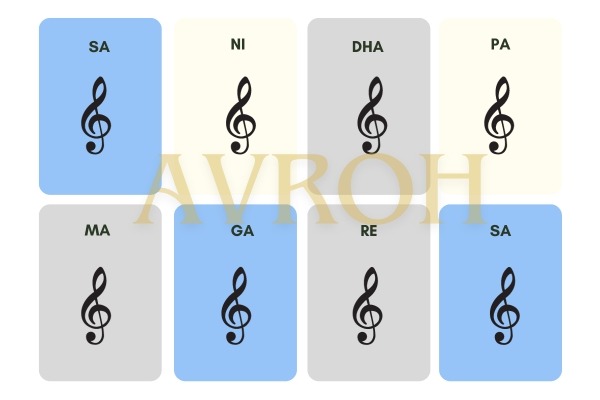...
What does Aaroh and Avaroh mean in Hindustani classical music with examples and significance

Can you enjoy a piece of music that has only ups or only downs? No right ? A melodious piece of music should have both ups and down or I should say it all starts from ups and downs. Initially, the notes are arranged in ascending order which means they are arranged in the ascending order of pitch where the lower-pitched notes are arranged first and the comparatively higher-pitched notes are arranged consecutively.
What is Aaroh-Avroh
When notes are arranged in ascending order of pitch they make the well-known sequence of the seven notes – sa re ga ma pa dha ni sa. When the notes are played or sung in ascending order that is – sa re ga ma pa dha ni sa, they are known as aaroh and when they are sung or played in the descending order of pitch they are known as avroh.
Example – Raag Bilawal aaroh and avroh
As most of us already know that raag bilawal is the raag that has all the swaras shuddha. It is the raag that is sung or played in the mornings and is associated with the mood of ecstasy, spirituality, and joy. It is not true that all the ragas have the same seven swaras and have the same aroh and avroh. Aroh and Avroh are different for different ragas. Different ragas have different swar combinations. Some ragas have all shuddha swaras some ragas have a mixture of shuddha and komal Swaras and some ragas also consist of teevra ma.Raag bilawal has all Shuddha swaras and also the jati of raag bilawal is sampoorn sampoorn which means that raag bilawal has all the seven swaras sa re ga ma pa dha ni sa.
Hence the aaroh and avroh of raag bilawal goes like –
- Sa re ga ma pa dha ni sa

- Sa ni dha pa ma aga re sa

The Art of Exploration
But why do you think the concept of aaroha and avroha was created and what is their significance of it? Aaroh and avroh are sung at the beginning of the Raga in order to make the audience understand the mood, the jati, and the swaras of the Raga that the performer is going to sing. At the beginning of the performance, the performer tries to create a mood and attract the audience towards the essence of the Raga. Aroha and avroh are like icing of the cake which is shown in the upper layer of the cake in order to attract the audience towards the core part of the cake.
Why it is important to learn Aaroh-Avroh?
1. Foundation of Melody:
It works as the foundation of Melody and also helps the listener understand which Raga is going to be played or sung. Also, it helps in creating the mood of the Raga.
2. Improvisation and Creativity:
There is not only one way to sing aaroh and avroha but there are many styles in which we can sing them and attract the audience towards the radiations that are created while singing the melody. Different patterns of aaroh and avroh are known as alankaras. There are mainly eight major alankara’s in Indian classical music and these are used to practice the vocals of Indian classical in order to enhance one’s vocal quality.
Additional Sources
- What is Aaroh & Avroh?Aroh Avroh Kya Hai?आरोह अवरोह का Riyaz कैसे करे?How to Remeber Aroh & Avroh ? –https://youtu.be/XXaTgyKokY8
- Pyramid Aroh Avroh | Alankar | Sargam Zone – Pyramid Aroh Avroh | Alankar | Sargam Zone
- All the best alankars for Indian classical music practice – All best alankars for indian classical music practice


